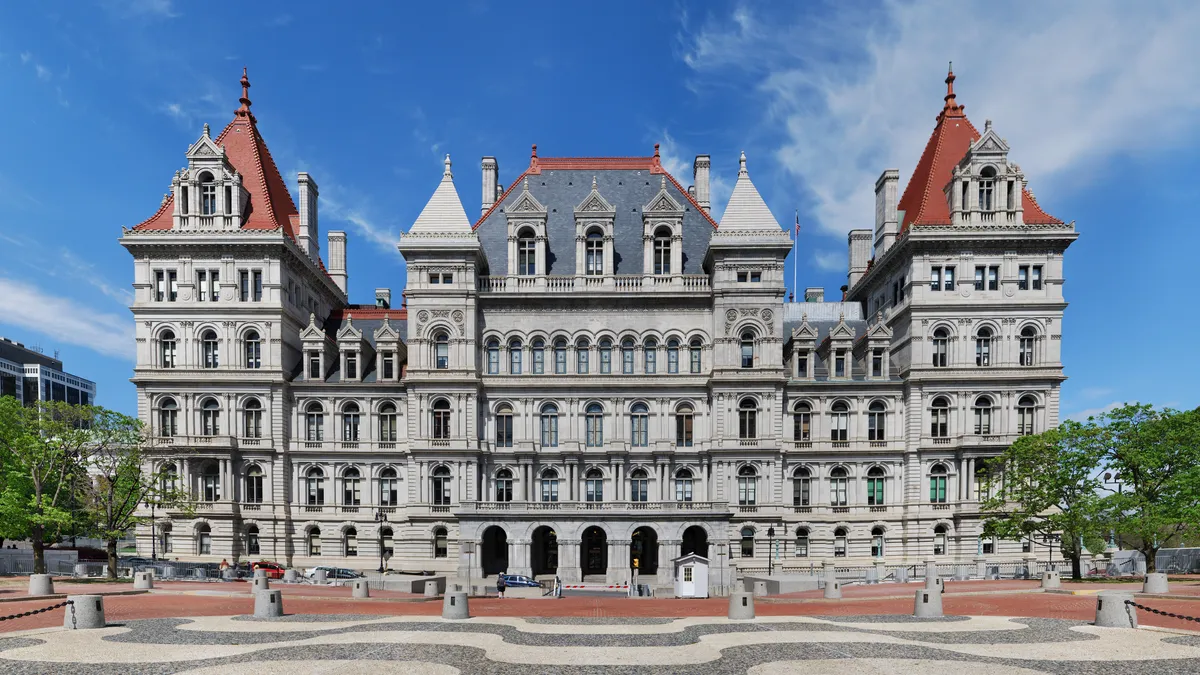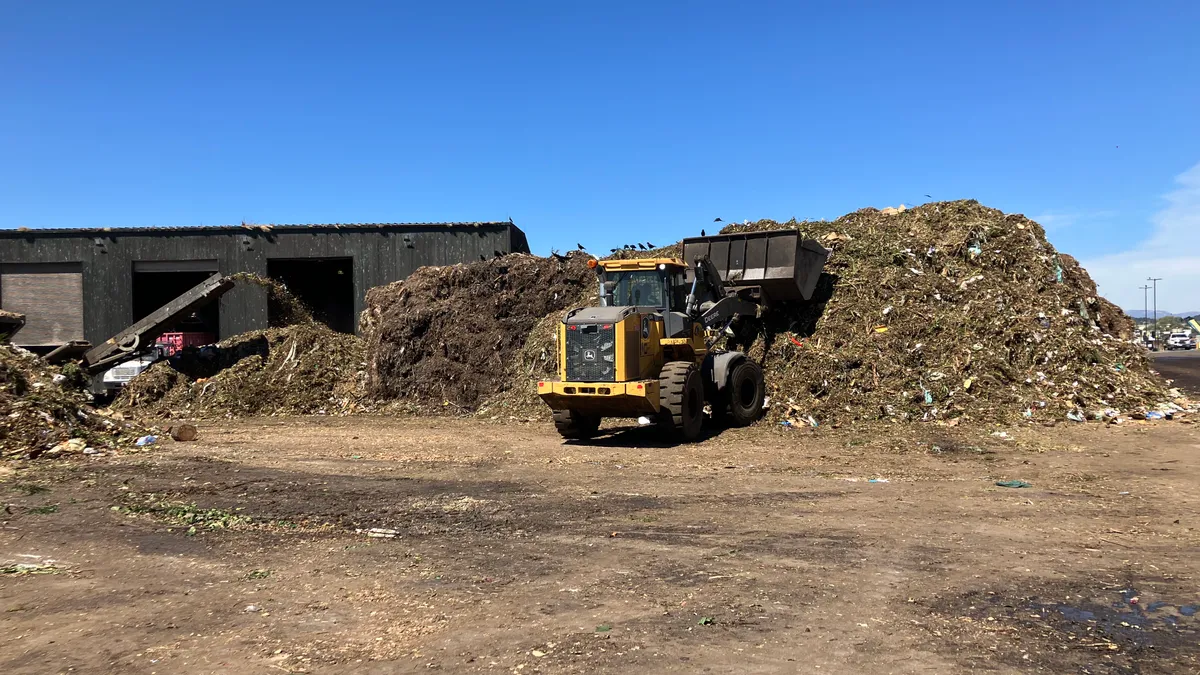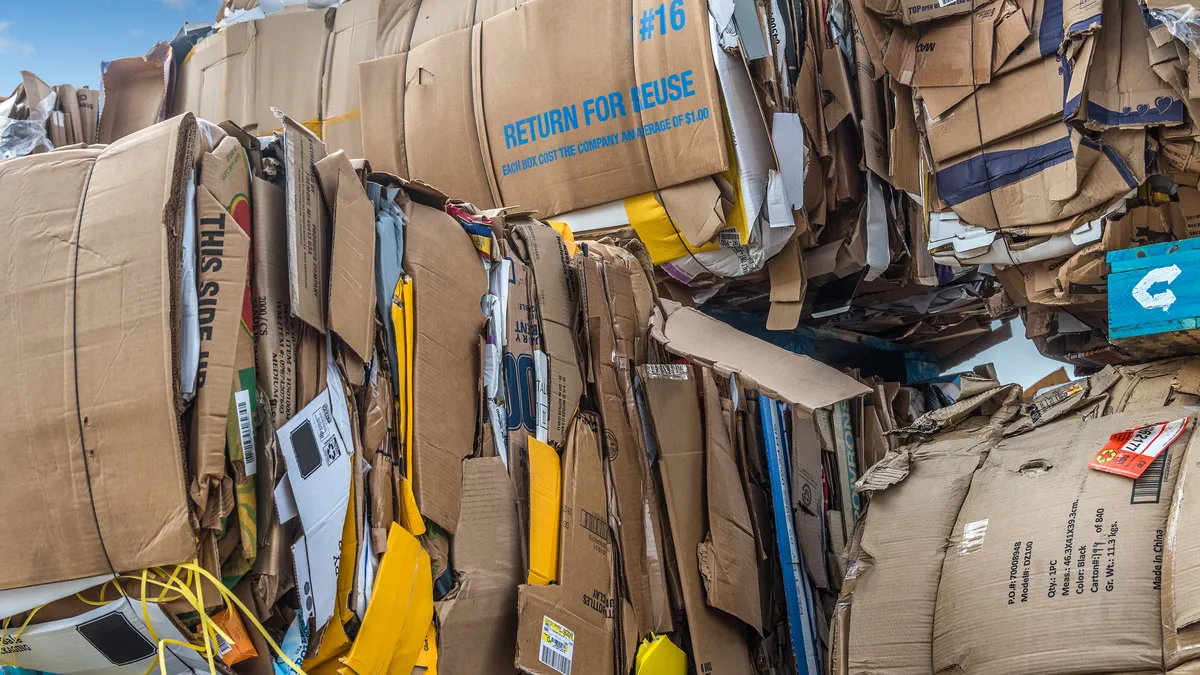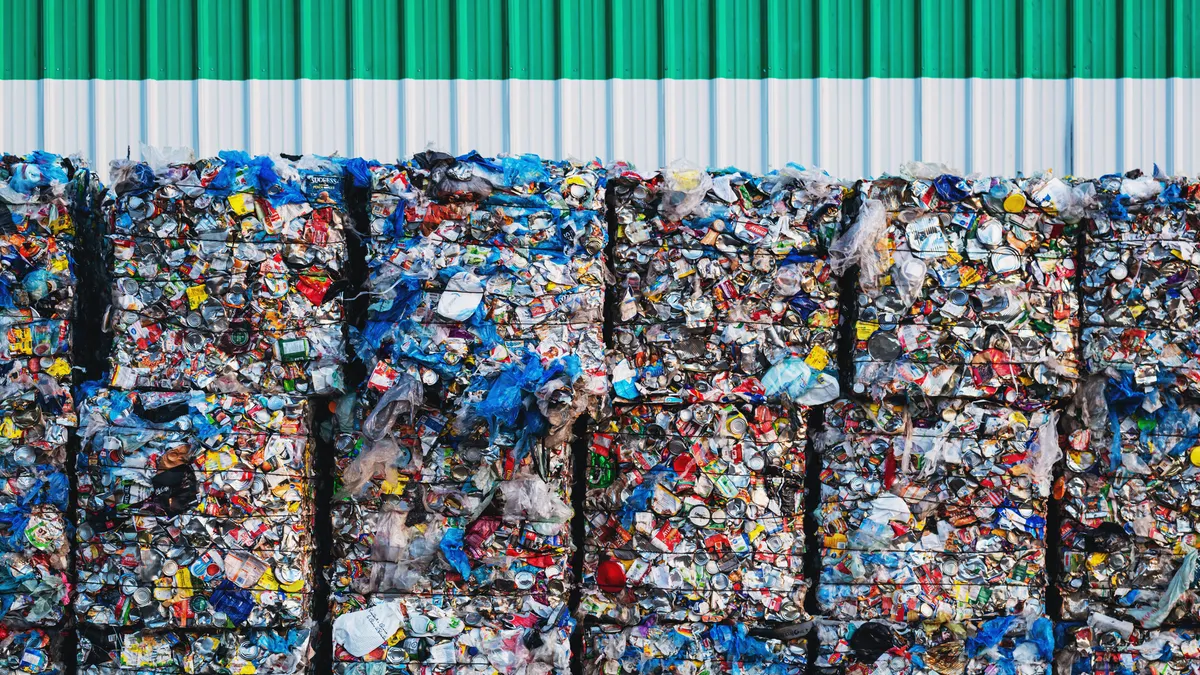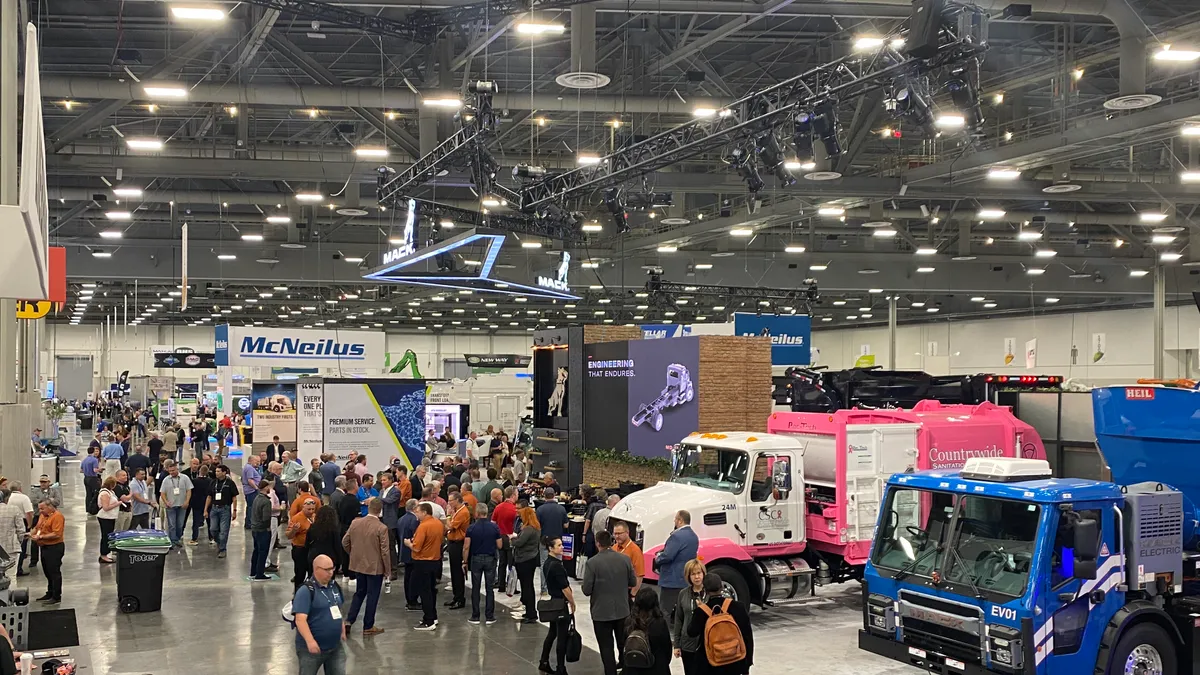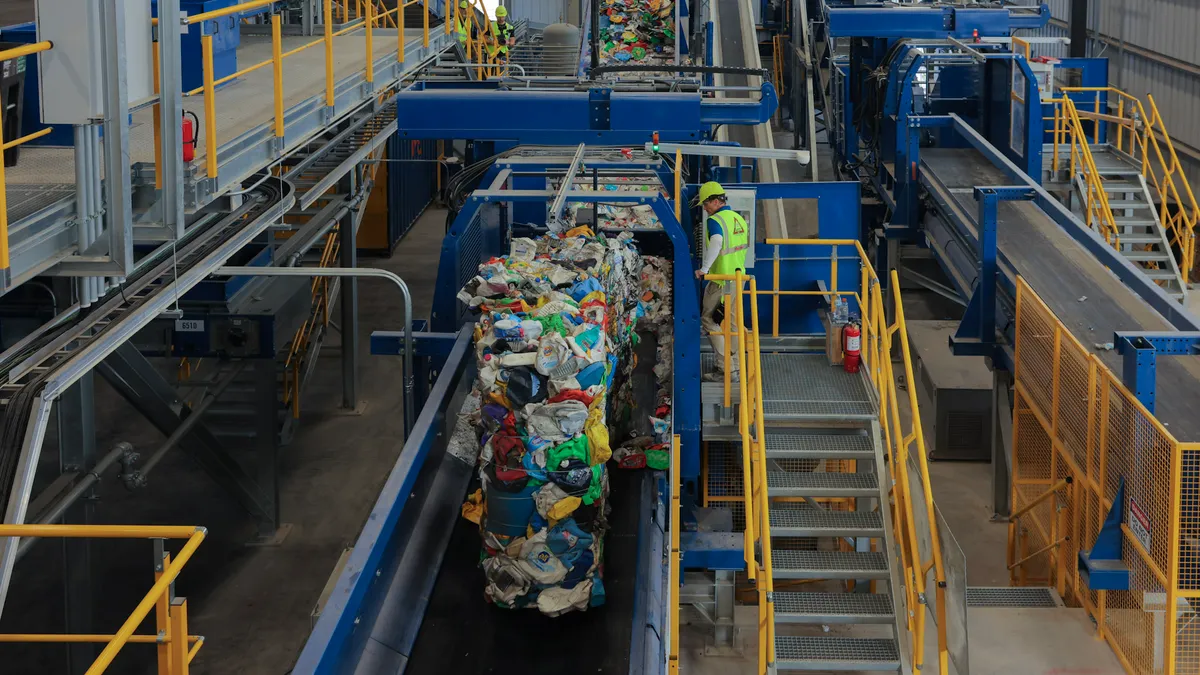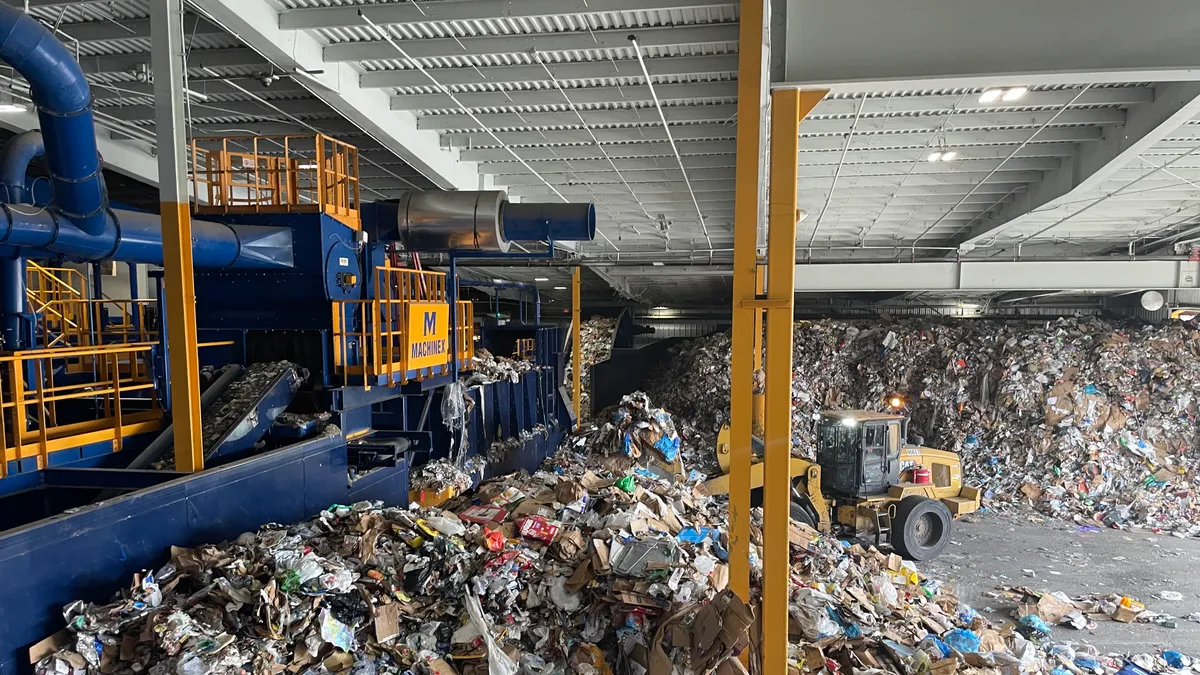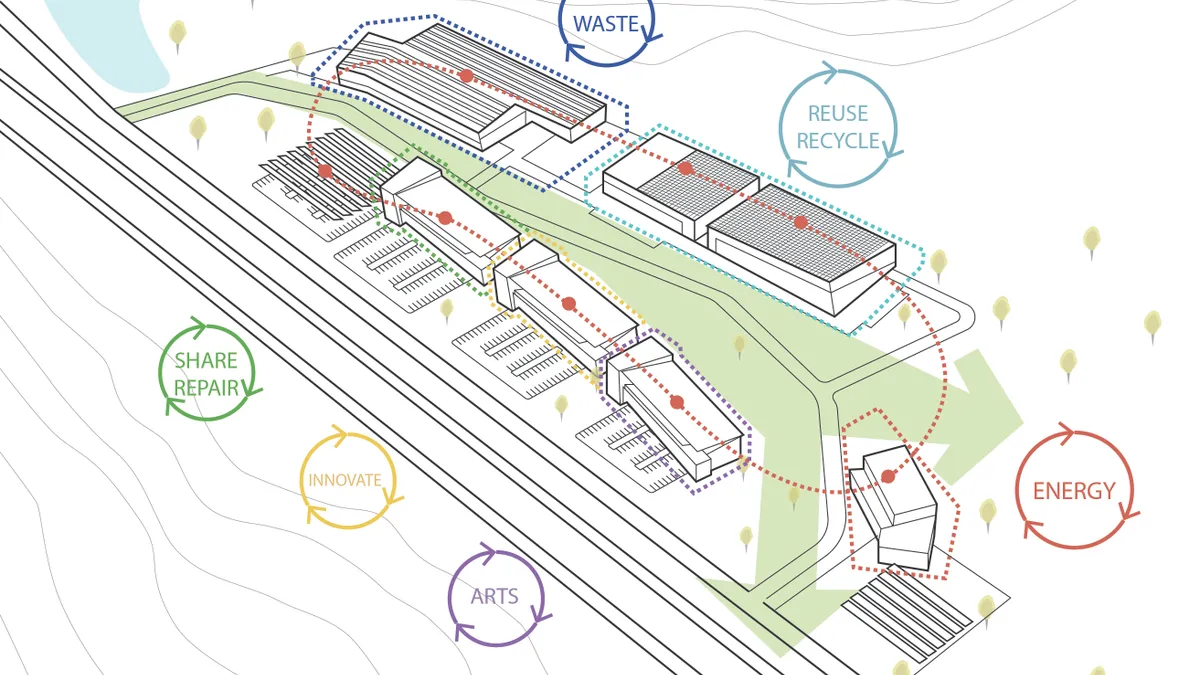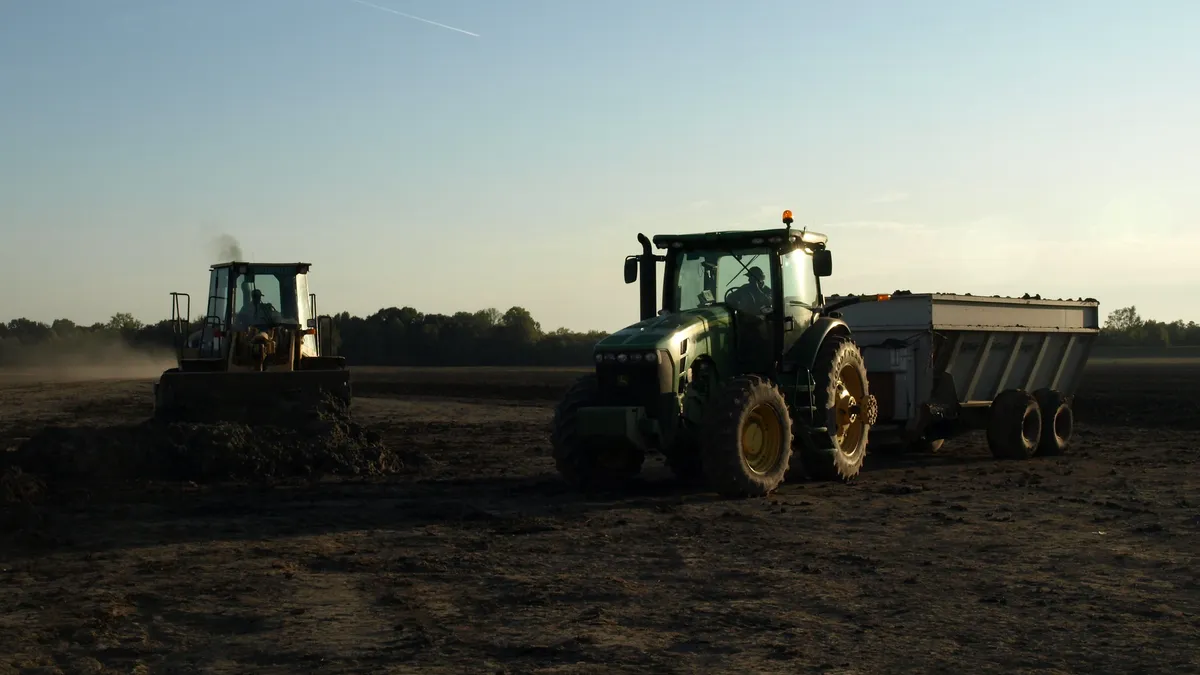New York could soon become one of the largest states to enact a commercial organics recycling requirement, which businesses would have about four years to meet.
After much discussion and previous attempts to pass legislation, Governor Andrew Cuomo has included the plan in his proposed executive budget for FY18. If this survives the budget process then New York would join California, Massachusetts, Vermont, Connecticut and Rhode Island as one of the few states with some form of organic waste diversion requirement. Though like any statewide policy change, the details are complicated and full implementation is far off.
New York would join California, Massachusetts, Vermont, Connecticut and Rhode Island as one of the few states with some form of organic waste diversion requirement.

The requirement would apply to any commercial operation that has two tons or more of food waste per week. Donation for human consumption is encouraged over processing and all affected generators would have until at least January 2021 to comply. Existing organics diversion laws in cities with more than one million people (i.e. New York) would be exempt from these requirements.
For those who have been following Cuomo’s past policy announcements on anaerobic digestion investments or talking to state officials, this requirement is not surprising. Cuomo cited the idea as a priority during last year’s budget process and some observers expected it would have already been passed by the state legislature in some fashion by now. Because of this long lead time the industry has been ready to go.
“New York has done this with about as much aplomb and stakeholder involvement over a multiple year period that you could ask,” said Steve Changaris, northeast regional manager for the National Waste & Recycling Association (NWRA).
Processing capacity
While New York is the state's largest city, four others — Buffalo, Rochester, Yonkers and Syracuse — have populations of more than 100,000, indicating that there is a lot more room for organics recovery across the entire state.
As written, the diversion requirement would apply to any supermarket, restaurant, educational institution (not grade schools), food processor, correctional facility, hospital, entertainment venue or sports arena. According to the state’s Department of Environmental Conservation (DEC), about 1,200 of these large commercial generators are wasting 275,000 tons of food per year, yet DEC estimates that if 5% of this wasted food was donated then food banks would see a 20% increase in the amount of food available.
DEC estimates that if 5% of wasted food was donated, then food banks would see a 20% increase in the amount of food available.

To assist in this process, the state would offer funding to food banks for capital improvements and set up a database to connect generators with recovery organizations. Vermont, which has reported a significant increase in food donations since enacting its own organic waste diversion requirements, was cited as an example.
Any food that can’t be donated for human consumption "to the maximum extent practicable," or used as animal feed, would have to be transported to a processing facility by a hauler. Processing options include composting, aerobic digestion, anaerobic digestion or ethanol production. Grants would be provided to help municipalities expand their composting options and generators would only be required to divert their organic waste if a processing facility is within 50 miles.
It remains unclear how widespread these processing options are in such a large and widely-rural state. Based on estimates from the Environmental Research & Education Foundation (EREF), New York had 124 active composting facilities that processed 1.02 million tons of material in 2013. A sizable portion of this was likely yard waste. Though with large projects such as the American Organic Energy facility on Long Island in the works — and enough lead time for others to come online — processing options are expected to improve.
The DEC would be required to assess processing capacity and notify generators whether they would be expected to comply with the requirements by October 2020. The law also includes an exemption for generators that are already processing their organics at a "mixed solid waste" facility.
By March 2022, all generators would have to begin submitting an annual report to the state about how much food they had diverted, where it was going and who was taking it there.
Questions and obstacles
As haulers, processors and commercial generators have experienced in other states, this type of shift can be complicated. In Massachusetts — which has a diversion requirement for any business that generates more than one ton of food waste per week — the policy has been heralded as a success. Though it is also considered somewhat difficult to enforce.
Since the lead time before enforcement would be so long in New York, some businesses might wait to change their practices and could operate below DEC’s radar. In some cases it might take a report from a competing business that had chosen to make the change and borne the additional costs to invite state attention.
Thomas Walsh, a partner and environmental attorney at Barclay Damon, has been analyzing the implications of this law and noted that the situation presents potential liability issues. For example, if a business hired a consultant to assess its organic waste situation and chose to ignore the findings, the state could later use that assessment against them unless it was covered under attorney-client privilege.
Another area Walsh noted is that the encouragement for food donation isn’t supported by any additional state legislation. As discussed by lawyers and food recovery groups in other states, the federal Good Samaritan Donation Act still leaves much to interpretation. This is one of many factors that can often lead businesses to bypass donation for composting to avoid any issues.
“If we are going to require the recovery of excess edible food and ensure a significant portion of inedible food waste is used as animal feed, and we are doing this for all these good purposes, the food waste generators should have a New York law that provides the same protections as the federal law and those protections should be extended to the provision of food waste as animal feed," said Walsh via email.
For companies in the recycling industry that will be expected to handle any remaining food scraps deemed unfit for human consumption, there will surely be more questions as well. Haulers will be required to make sure waste isn’t commingled with source-separated food scraps at any point and disposal sites will be responsible for ensuring they don’t accept any of these loads.
Groups such as the NWRA can be expected to hash out all of those details in the coming months and years if this plan does move forward.
"It’s coming and we’re anxious for the legislative review and opining further on the subject," said Changaris.
Next steps
The state legislature must approve a budget bill by April 1, but that doesn't mean it will look anything like what has been presented by Governor Cuomo. The odds of this organics diversion requirement making the cut are seen as favorable, but anything can happen.
If Cuomo’s proposal doesn’t make it through the budget debate, another bill could still move the idea forward in a different form. State Senator Kevin Parker has been advocating for a bill that would cover state buildings such as universities and correctional facilities. Parker's bill would go further than the governor's proposal by requiring organics diversion for generators of one ton or more per week in 2018 and eventually expanding that to generators of a quarter of a ton by 2022.
The odds of this organics diversion requirement making the cut are seen as favorable, but anything can happen.

Late last year, Parker told Waste Dive that he saw this as an opportunity to help expand processing options for all commercial businesses ahead of an inevitable statewide requirement.
"If you can make a positive economic argument, a cost savings argument...we could develop a market around it," said Parker. "We’re going [to] sooner than later."
A new version of Parker's bill was re-introduced on Jan. 23 — about a week after the budget proposal was released - and his office confirmed that they will still be pursuing it. The law could potentially complement the governor's proposal if passed or be merged with it in some way.
Environmental groups such as the New York League of Conservation Voters and Natural Resources Defense Council (NRDC) have expressed their support for the plan as well, and see it as a way for New York to become a national model for other states looking to tackle food waste.
"What we hope will evolve from this idea is a nation-leading state program to get wholesome food to the hungry, slash the unconscionable amount of good food that is simply going to waste in New York State and cut back on food waste-related methane emissions from landfills," wrote Eric Goldstein, a senior attorney with NRDC, via email. "We look forward to working with the governor's team and state legislative leaders to develop a final statutory proposal that will advance the governor's forward-looking initiative."
Waste Dive will continue to follow these plans as they develop.



